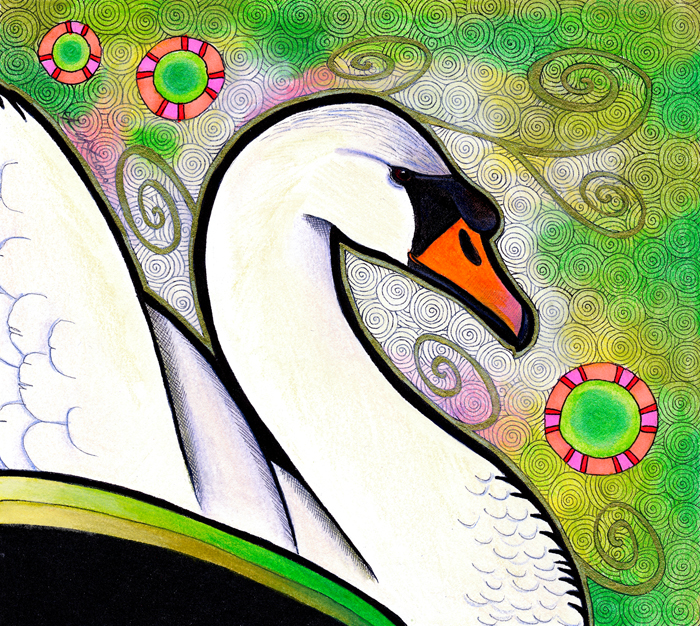Mute Swan – Many Ways to Communicate
Keywords:
The ugly duckling. Muteness. There are many ways to communicate. Elegance. What’s mine is mine. Firm boundaries. A firm no. Taking your responsibilities and loved ones seriously. Monogamy. Strong focus and vigilance. Evolution and transformation. Grace. Wetland magic. Calm within the liminal. Love. Balance. Insecurities and self-worth vs. security and self-acceptance. Transitions within self-worth. Water magic. Oversee your ecosystem. Caretaking.
Description:
The mute swan (Cygnus olor) is a white swan native throughout Eurosiberia and north Africa, it has been introduced to North America. It is partially migratory in some locations. Its closest relatives are the black swan and black-necked swan. It is less vocal than other swans, though not completely mute as the name suggests. Cygnets are particularly vocal. The loudest noise they make is actually through the movement of their wings, which can be heard up to two kilometres away. Males (cobs) are larger than females, and have a larger knob on their bill. They are the second-largest waterfowl species, though individual males can exceed the largest species (trumpeter swans). It is one of the heaviest flying birds. Cygnets are usually grey-buff and bland. It is the mute swan that is thought to be at the root of The Ugly Duckling fairy tale by Hans Christian Andersen.
They are omnivorous, their long necks helping them get aquatic plants and animals at the bottom of lakes. They will also eat agriculturally relevant plants like wheat and canola. They are often found in proximity to gulls and ducks, who take advantage of the swan’s feeding to eat anything that floats to the top. They nest on large mounds in shallow water at the edge of, or in the middle of lakes, built with vegetation found nearby. Their preferred habitats are shallow coastal ponds, lakes, estuaries, bogs and streams. They often reuse the same nest year to year, maintaining it as necessary. Both males and females tend the nest. Same sex pairs can also form, and will tend nests together, sometimes stealing eggs or adopting eggs or young when another pair goes missing or is harmed. Females lay between four to ten eggs. Mute swans are monogamous, and will grieve lost or dead mates and cygnets.
Mute swans are very territorial, so there is usually only one pair per lake, unless the lake is large enough to support multiple pairs. Juveniles will form larger bachelor flocks, sometimes several hundred birds strong. While defending their territory, they can be highly aggressive and protective. Their typical pose with a curved back neck and wings half-raised – busking – is a threat display. If a hissing vocalisation isn’t respected, they will physically attack with the spurs in their wings and biting. Small birds are grabbed and thrown aside. The wings are large enough to cause injuries to humans or drown domestic dogs that will sometimes attack them. They can be preyed upon by dogs, coyotes, raccoons, mink, foxes, lynxes and other felines, golden eagles, bears and other canines. In the USA, cygnets are primarily attacked by common snapping turtles. Despite being widely protected throughout the world, it is still hunted and poached illegally. It is commonly kept in captivity in parks and ponds. It is the national bird of Denmark.